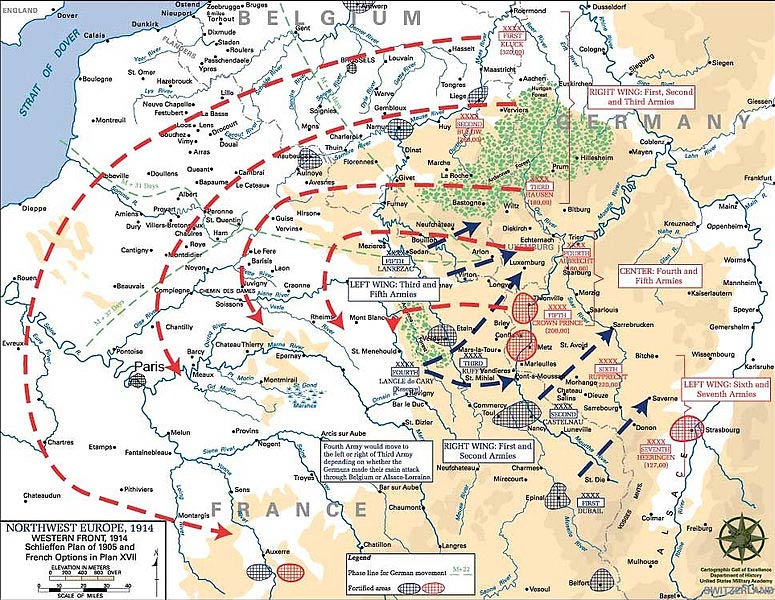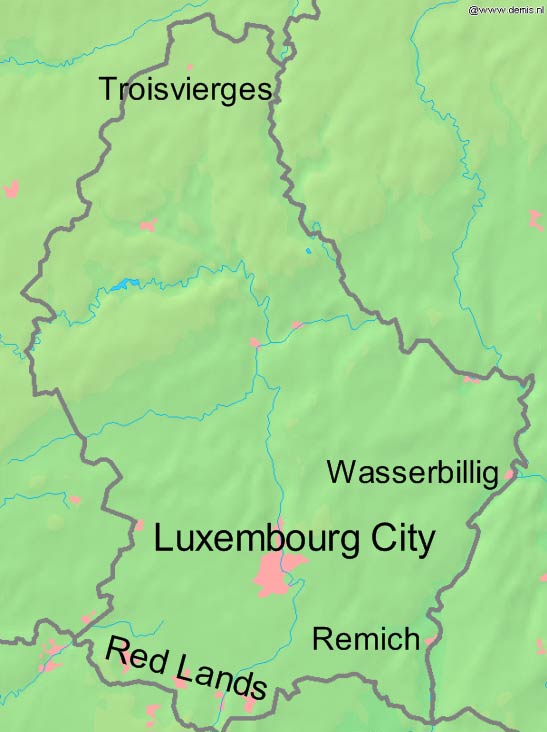 The German occupation of Luxembourg in World War I lasted from August of 1914 to November of 1918. The stated goal of the occupation was to provide support to the German troops in nearby France. Germany would later occupy Luxembourg once again in World War II.
The German occupation of Luxembourg in World War I lasted from August of 1914 to November of 1918. The stated goal of the occupation was to provide support to the German troops in nearby France. Germany would later occupy Luxembourg once again in World War II.
Background to Occupying Luxembourg
Those living in Luxembourg had the unfortunate fate of being located in a region that was strategically important to the German war effort. Count Alfred von Schlieffen had devised what was known as the Schlieffen Plan, an offensive and defensive strategy designed for dealing with both France and Russia.
Since Russia had the larger army, it was believed that defeating France would be the wiser strategy to employ at first. During this time, a smaller amount of troops could prevent the Russians from advancing. Once France was completely conquered, the German troops could launch an assault on the Russians.
Germany’s Strategies in Luxembourg
 To succeed with such a plan, the Germans required easy access of various routes leading into France. Luxembourg rested in the middle of one of the routes for advancing into France. In particular, the German 4th Army would be required to march through Luxembourg on its way to France. As the army, which was commanded by Albrecht von Württemberg, marched through Luxembourg, an occupation force was left behind.
To succeed with such a plan, the Germans required easy access of various routes leading into France. Luxembourg rested in the middle of one of the routes for advancing into France. In particular, the German 4th Army would be required to march through Luxembourg on its way to France. As the army, which was commanded by Albrecht von Württemberg, marched through Luxembourg, an occupation force was left behind.
The German occupation of Luxembourg in World War I would contribute to various strategic advantages. For one, there were quite a number of critical railway junctions in the city. Supplies could be sent via rail by allies and foes alike. German control of the railway stations greatly ensured that anything traveling via rail would be to the benefit of the German army and its stipulated goals.
Nonresistance in Luxembourg
 The citizens and the government of Luxembourg offered no resistance to the German army. Germany had just recently declared war on Russia and the populace of Luxembourg had long since realized a renewal of the late 19th century Franco-Prussian War would emerge.
The citizens and the government of Luxembourg offered no resistance to the German army. Germany had just recently declared war on Russia and the populace of Luxembourg had long since realized a renewal of the late 19th century Franco-Prussian War would emerge.
Since such a war would sprawl far beyond the borders of Russia and Germany, the people in Luxembourg and other regions of Europe had to be both prepared and realistic about the situation. For those in Luxembourg, realism centered on accepting the inability to defend a German invasion.
The German occupation of Luxembourg in World War I occurred fairly easily because the Grand Duchy army in Luxembourg totaled about 400. Germany was marching through the nation with tens of thousands of troops.
Accepting Defeat
Grand Duchess Marie-Adélaïde and Prime Minister Paul Eyschen met with Richard Karl von Tessmar, the German commander and accepted their defeat. The German Chancellor Theobald von Bethmann Hollweg stated that had Germany not invaded, France would have. Not very many in Luxembourg took this statement as being serious.
The residents of Luxembourg did their best to live a normal life under the occupation. There was no serious resistance movement to the occupation. It would not be until World War I ended that the German occupation would end.